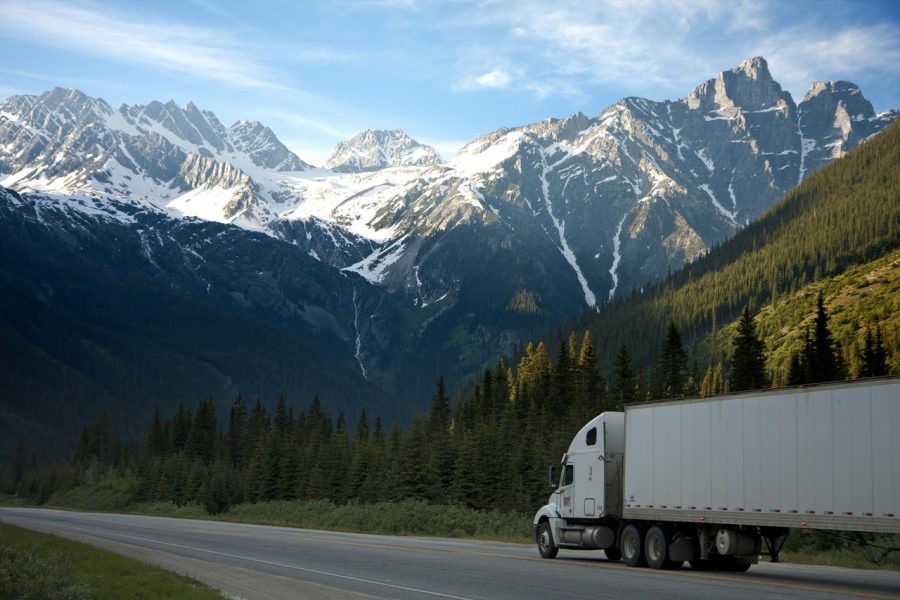Something that requires constant temperature monitoring is food and beverages when being kept in storage. If they get too hot the items can spoil and they will have to be disposed of. However, if they get too cold, they can expand and cause damage to the packaging.
Transporting food and beverages
Thanks to technological advancements we are now able to consume food stuffs all year round from locations that are far from where we live. This level of convenience is only made possible thanks to transportation methods that feature temperature controlled storage solution, such as those found at https://northslopechillers.com/process-cooling/food-beverage/.
Whether it is a truck, a train, a ship, or a plane that our food and beverages are traveling on it must be correctly stored and the required temperatures in order to avoid spoilage. Because different food stuffs and different beverages have a range of maturation rates, shelf life’s and temperature ranges careful consideration must be made in order to make sure it is stored correctly so that it can still be consumed upon reaching its destination.
Within the United States the majority of fresh produce is transported to its destination via trucks, whereas ships and planes transport produce offshore. Keeping food and beverages at the correct temperature during their transportation stops dangerous bacteria from growing that could harm the taste and spoil the produce. It also helps to control the maturation of the produce, extend shelf life’s, and thus prevent wastage. Most important for businesses, it saves money!
Food and beverage chiller solutions
There are several food and beverage chiller solutions, which are currently available on the market. They all work to effectively chill the produce to maintain perfect temperature conditions throughout the storage and transportation processes.
They range from large and bulky refrigeration boxes that are expensive, through to ice packs and insulation liners that are not only less effective but also require much more attention.

Chillers used in the food and beverage industry
When examining the type of chillers that can be used for food and beverages there are two main categories, which are:
· Vapor compression – The most common type and include water / fluid chillers and air chillers. They use an electric driven mechanism to push a refrigerant through the system.
· Vapor absorption – Use heat to push a refrigerant around the system.
As stated, vapor compression chillers are the most common types used within the food and beverage industry and are placed into two sub categories, which are:
· Water / fluid chillers – Work by removing heat via the pumping of water, or another fluid, through a condenser and dispersing it through a cooling tower. These chillers are more efficient than air cooled chillers. Thanks to water’s high heat capacity, the process of using water evaporation to dissipate heat is far more energy efficient than blowing cool air across a hot surface. Traditionally, these types of chillers last longer than air chillers as well. Additionally, integrating high-purity fittings into the system enhances its reliability and minimizes the risk of corrosion or contamination, extending its lifespan and ensuring consistent performance.
· Air chillers – Work by using air to get rid of the heat. Fans blow cool air across the tubes of the condenser to cool it down. This method is much less energy efficient than the water cooling method. These chillers are ideal for when it comes to static cooling. They are super easy to install and can even be put on the outside of a building, saving space internally. However, they are more likely to experience issues with recirculation and blockages than water / fluid chillers.
Despite these differences, the chillers are each made up of the same components, which include an expansion valve, an evaporator, a compressor, and a condenser. Additionally, the mechanics of the two types of chillers are also extremely similar.
The compressor is where the refrigeration cycle starts and begins by pushing the refrigerant through to the condenser. During this process, the low temperature and low pressure refrigerant is compressed and changed into a high temperature and high pressure gas. Whilst in the condenser air or water / fluid flows over the coils and removes any heat from the refrigerant. The refrigerant condenses at this point as it loses heat and turns into a liquid form. After leaving the condenser, the refrigerant goes through the expansion valve where it is restricted. Once through the valve, the refrigerant goes into the evaporator where it then begins to evaporate back into a gas state. During this process it gets very cold and absorbs a large amount of heat. This heat is removed from the fluid and transferred into the refrigerant. This will then enter the compressor again and the whole cycle starts over.
The types of compressors the chiller can utilize are subcategorized as the following:
· Scroll compressor chillers – Used in both water / fluid chillers and air chillers and work by utilizing one rotating plate and a stationary plate to compress the refrigerant.
· Reciprocating chillers – Work using a chamber and pistons to compress the refrigerant.
· Centrifugal chillers – It is mostly water / fluid chillers that utilize this compressor technology. It is extremely rare to find technology within an air chiller. They are predominantly used for larger and medium sized cooling loads that are anywhere between 150 – 6,000 tons. They work by using rotating blades to compress the refrigerant and push it through the chiller. However, these types of compressors are able to provide high cooling capacity whilst maintaining a compact design.
· Screw driven chillers – Used in air chillers and water / fluid chillers and are ideal for medium to smaller sized cooling loads. This type of compressor technology works by utilizing a couple of helical rotor blades that interlock to compress the refrigerant. They come as units that weigh as much as anywhere between 70 – 600 tons.
What are the benefits of a food and beverage chiller solution?
An effective and robust food and beverage chiller solution will provide peace of mind in the knowledge that the desired temperature is always maintained throughout processing and transportation to protect products and ensure that none become spoilt, and thus wasted.






 Your total news and information resource for all things Science, Technology, Engineering / Mathematics, Art, and Medicine / Health.
Your total news and information resource for all things Science, Technology, Engineering / Mathematics, Art, and Medicine / Health.
Leave a Comment